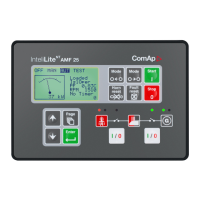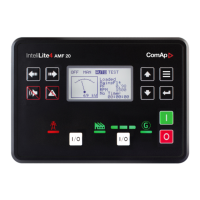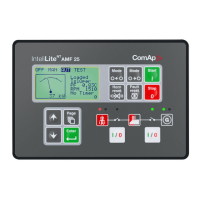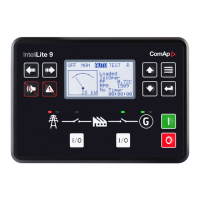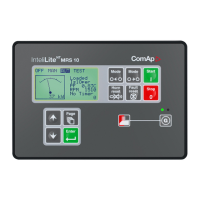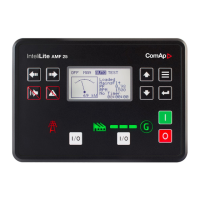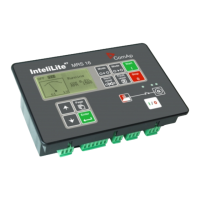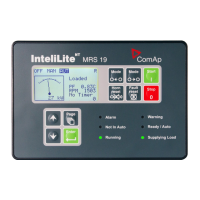InteliLite Global Guide
153
6 Communication
6.1 PC 153
6.2 Connection to 3rd party systems 166
6 back to Table of contents
6.1 PC
6.1.1 Direct communication 153
6.1.2 Remote communication 155
6.1.1 Direct communication
A RS232, USB, RS485 or ethernet interface can be used for direct cable connection to a PC.
Connection via RS232
A plug-in communication module CM-RS232-485 is necessary for communication via RS232 connection.
The module is plugged into the slot located on the rear side of the controller. To find more information about
installation of the modules see Plug-in module installation on page 58.
RS232 interface uses COM1 Mode (page 367) port of the controller. Use a cross-wired serial communication
cable with DB9 female connectors and signals Rx, Tx, GND.
Note: Also USB-RS232 convertor can be used.
Image 6.1 Cross-wired RS232cable is used
Image 6.2 Cross-wired RS232 cable and USB is used
Connection via RS485
A plug-in communication module CM-RS232-485 is necessary for communication via RS485 connection.
